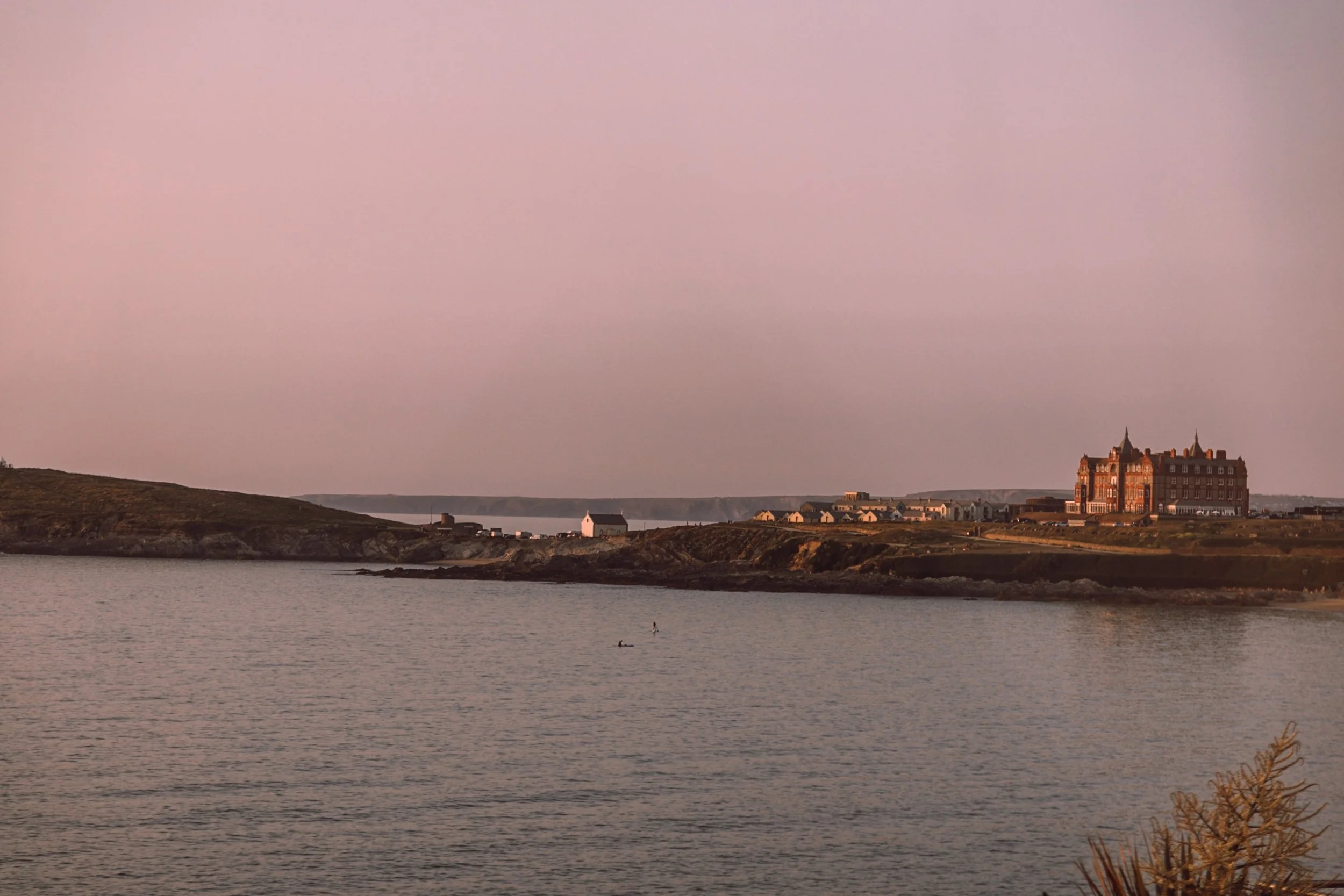Exmoor National Park is a landscape of contrasts, from soaring coastal cliffs to gentle rolling moorlands. The coastline in Exmoor is abundant in trees and has some of the most remote and spectacular beaches that are worthy of the necessary adventure to discover their beauty.
Named after the River Exe, the largest river in Exmoor is how the National Park gained its name and holds legendary tales such as smuggling attempts and the Exmoor Beast. Read more about all of the national parks in the UK to discover more of the most beautiful nature spots across the island.
Where is Exmoor National Park?
Set up in 1954, Exmoor National Park is located in the southwest of England and covers almost three-quarters of west Somerset and a quarter of North Devon. The park’s rugged coastline follows along the Bristol Channel on the north boundary with views over to Wales.
Exmoor is named after the River Exe where the source of the river starts and flows through the park and eventually meets the sea in Exmouth. The River Exe is home to an abundance of salmon and other river wildlife. The park is also named after the incredible moorland landscape which provides a habitat for heather flowering in late summer covered in a colour palette of purple hues.
When to Visit Exmoor National Park?
We visited Exmoor mid-summer, which meant we could make the most of daylight hours and even amongst the summer crowds Exmoor was much less busy than some of its neighbouring hotspots. There are quiet hidden spots to be found across the park.
Exmoor can be visited at all times of the year and you won’t be disappointed by the fresh green countryside and flowers in spring, warm summer days on a remote beach, exploring the moorlands in autumn or standing in awe of the landscapes frozen in time in winter.
How long will I need to visit?
A weekend visit will allow you to have a whistle stop tour around Exmoor, but a week will allow you take in most of what the park has to offer you and be able to really experience the variety of landscapes and wildlife throughout the park. Even though Exmoor is one of the smaller of the National Parks, in our opinion it is one of the most beautiful parks.
How to get there?
Exmoor has great transport links with the rest of the UK. There are trains and buses that are connected to nearby towns. Trains can take less than 2 hours from London and Birmingham and the mainline stations are just outside the National Park in Taunton and Tiverton Parkway. National Express provides coaches to Bridgwater, Taunton, Tiverton and Barnstaple which are linked to Minehead and some of the larger villages.
If travelling by car, there is an extensive road network which is linked to the M4 and M5, if you’d like a more scenic route then follow the A39 but be aware of Porlock Hill, the steepest A road in the UK (25%), there is a private toll road you can use to avoid the hill. It will take approximately just under 4 hours to drive from London. There are three international airports located nearby Exeter, Bristol and Cardiff with transport links also with London airports including Heathrow, Luton and Stansted.
How to get around the park?
If you will be using public transport on your trip around the park there are a number of different bus routes within the area. There are over 1000km of Rights of Way that allow you to walk amongst the Exmoor landscape on foot. The West Country Way is a national cycle route which crosses the moor and provides links with rail stations. There are a number of council car parks which you will have to pay for and other free car parks if you are travelling by car.
What is Exmoor National Park known for?
Perhaps one of the lesser-known National Parks and also one of the smallest at 693km2, Exmoor should not be overlooked. Exmoor National Park is home to the highest coastline of the British mainland with the highest coastal hills towering up to 433m at Culbone Hill. The diverse landscapes of Exmoor include extensive moorland, remote and dramatic coastline, steep wooded valleys, and pristine rivers and are home to rare wildlife including Red Deer and Exmoor ponies.
Conservation of the park takes priority and is protected by many designations. It is known for star gazing with minimal light pollution and you could spot the Milky Way if you’re lucky. It was named Europe’s first International Dark Sky Reserve and is one of the 15 Dark Sky Reserves in the world with only three located in England.
The South West Coast Path (SWCP) starts in Minehead which is a challenging beginning following the Exmoor coastline and tracing the southwest coastline for 630 miles until the trail reaches its end in Poole. The SWCP climbs the equivalent of four times the height of Mount Everest and is the longest of England's National Trails. Other popular hikes in the area include Dunkery Hill, Coleridge Way and The Two Moors Way. There are no motorways that enter the national park only two A roads which allow you to escape into nature.
Where to Stay?
There are hotels, B&Bs, campsites and self-catering accommodation to choose from. We stayed on campsites and in our van at a National Trust car park in Heddon Valley where you could pay a donation to stay the night and was a trial.
Camping in Exmoor is a great choice for being immersed in nature and for chances to spot wildlife. Glamping in North Devon is a popular option providing the luxury of home comforts combined with the outdoor experience. We’ve put some of our top picks for staying in Exmoor National Park in North Devon below:
What are the top things to see and DO in Exmoor National Park?
Exmoor is full of adventure, history and wildlife and there are plenty of places to see and things to do. We have put a list together of our highlights whilst visiting the Park which we hope helps you in planning your trip to this incredible place.
Victorian water-powered railway, Lynmouth
A unique and must-see attraction in Exmoor is the Victorian water-powered railway in Lynmouth for an exhilarating ride down to the seafront in Lynmouth. Park in the Castle Ride car park in Lynton or if that’s too busy try Valley of the Rocks Upper car park which is a short walk 15 minutes from the town.
Lynton is a town at the top of the hill and Lynmouth is at sea level which is accessible by car, walking and by a water-powered railway! Lynmouth, also known as ‘Little Switzerland’ is a steeply wooded valley where the River Lyn meets the sea. You’ll find shops, tea rooms, cosy pubs and fish and chips on the seafront.
geological wonders, the Valley of the Rocks
Valley of the Rocks was formed by coastal erosion and is a great spot to hunt for fossils. The valley is surrounded by steep craggy cliffs where you can climb to the top and be rewarded with incredible views of the northern coastline of Exmoor and out onto the Bristol channel.
There are a few walks you can do from this location, one popular one is making a circular loop towards Lynton Cliff Railway station and back this route is part of the South West Coast Path. Look out for goats either roaming the cliff edges or sleeping next to the road who have been in the valley for hundreds of years.
Search the moors for Exmoor Ponies
A national park named after its extensive moorland is the ideal habitat for the Exmoor Pony. We were lucky enough to spot them living free and walking across the moors which was a highlight of our visit.
The Exmoor Pony is a rare breed and 500 have been recorded in Exmoor and it is suggested that it’s the oldest pony in Britain. These herds roam free and is not guaranteed to see them. Please take care when driving through open moorland.
However, if you want a good chance of seeing an Exmoor Pony, we would recommend heading to the following locations; Winsford Hill, Dunkery Beacon, Prayway Head, Anstey Gate/Molland Moor, Haddon Hill and Porlock Hill viewpoint. We spotted Exmoor Ponies on our drive home through the park on the B3223 close to Winsford.
Heddon Valley
Many walks within Heddon Valley make it a great starting point. There is a butterfly walk where you can have a chance to spot rare species including the high brown fritillary. We walked to Heddon’s mouth which is a beach the River Heddon reaches the sea.
We loved that the paths were made very accessible and passed someone on a mobility scooter with a huge smile on their face. We would also recommend having a drink at the Hunters Inn after your walk. We stayed in the National Trust car Park which was trialling vans staying overnight where you could put a donation which was a peaceful car park with picnic tables and the sound of the River Heddon putting you to sleep at night.
head to the coast for a sea adventure
There are fantastic spots along the coastline for watersports including kayaking, paddle boarding and coasteering. We took our paddle boards out at Watermouth Cove Holiday Park which is a sheltered cove where you can explore the coast and ventured onto Broadsands Beach which resembles scenes from Indonesia.
If you don’t have your own kayak or paddleboard, there are places where you can hire equipment for the day or go on a group tour.
Relax on a secluded beach
As a result of Exmoor’s steep coastline, creates the perfect environment for hidden, beautiful secluded beaches. One of our favourite beaches we visited was Woody Bay. As the name suggests, you walk through enchanted oak tree woodland and a steep climb down onto a rocky, pebble beach with a magical tidal pool and waterfall. A few other Exmoor beaches include Wringcliff Bay, Sillery Sands, Wild Pear and Hele Beach for a secluded getaway.
Star gaze
As already mentioned, Exmoor National Park is one of the best places to see the stars. The best-rated places for stargazing are Brendon Common, Wimbleball Lake, County Gate Car Park, Bossington Hill, Dunkery Beacon Webber’s Post and Winsford Hill. There are maps available from the Exmoor National Park’s website which highlights the best places to go for stargazing.
All aboard a steam train
If you fancy a scenic ride on a steam train then you will be in for a treat. Take yourself back in time to how it would have been to travel in the luxury first class at the Lynton and Barnstaple Railway. You can park and get tickets at the Woody Bay Station.
Once you purchase your tickets you are allowed to ride the train as many times as you would like. If you purchase a first-class ticket you can only use it once. The ride lasts around 25 minutes and stops at the end of the line for you to get out and enjoy the view and watch the train move to take the carriages back to Woody Bay Station.
They plan to restore the original railway line from Lynton and Barnstaple but this requires a lot of work including ground contamination and land acquisition. Your contributions will help the line to be restored to how it was. Please note that it is not open on Mondays and Fridays.
If you enjoyed this article pin it for later
WATCH OUR EXPERIENCE ON YOUTUBE
This post may contain affiliate links, which means if you purchase through these links, we may receive a small commission at no cost to you. Thank you for supporting our website.































